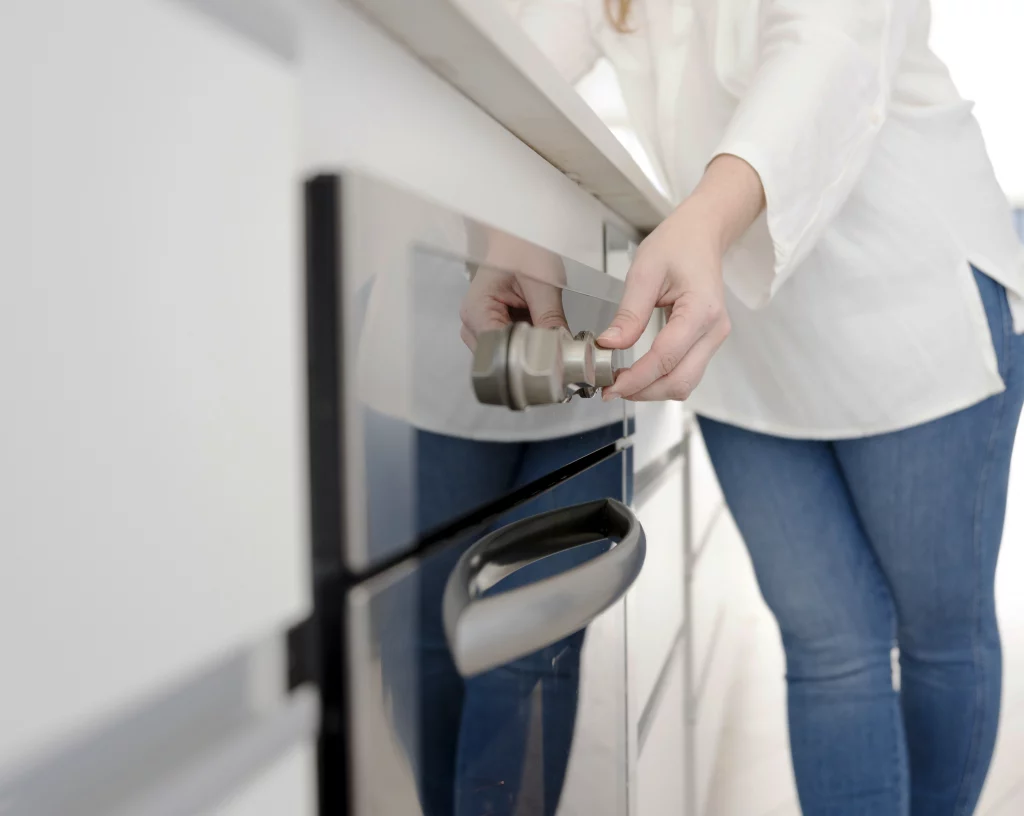 The kitchen is usually the part of the house that needs the most attention when it comes to cleaning. Out of all the areas that quickly accumulate grease and grime, ovens are certainly the worst. Oven cleaning is probably one of the most dreaded chores that, fortunately, has been made easier by some manufacturers. Most modern oven models include a self-cleaning option that will spare you the time and effort you would otherwise spend scrubbing the nasty buildup from the inside of your appliance.
The kitchen is usually the part of the house that needs the most attention when it comes to cleaning. Out of all the areas that quickly accumulate grease and grime, ovens are certainly the worst. Oven cleaning is probably one of the most dreaded chores that, fortunately, has been made easier by some manufacturers. Most modern oven models include a self-cleaning option that will spare you the time and effort you would otherwise spend scrubbing the nasty buildup from the inside of your appliance.
The self-cleaning cycle is easy to use and usually requires a very small amount of prep time and a little patience. Keep reading to find out how to make the best out of this amazing cycle.
What exactly is a self-cleaning oven cycle?
The self-clean cycle decomposes food residue and oils by using extremely high heat (about 470 degrees C.). When the cycle is complete, the soil is transformed into ash, which you discard. The oven is locked during the cleaning, which takes between two and five hours depending on the soil level and oven model.
How often should you use the self-clean cycle of your oven?
That of course depends on how often you use your oven and the amount of grease and buildup it accumulates. Generally, running the self-cleaning cycle once every six months is sufficient.
Keep in mind:
Always read the manual for your oven model. If you have misplaced your operating manual, most are available from the manufacturer online. Self-clean cycles can run anywhere from one to five hours, so schedule the cleaning for periods when you won’t be using the oven. The oven door will automatically lock. Once the cycle has begun, do not try to stop it or open the door until the cycle is over.
The self-clean cycle emits smoke and odours as it incinerates the soil in the oven due to the high temperature. To prevent the smoke and odours from filling your kitchen space, keep the area well-ventilated throughout the procedure. Keep the oven vents clear so that air can circulate freely.
Here are the steps you can take prior to using the self-clean cycle:
- Clear the oven – Check that nothing is left in the oven (cookie sheet, broiler pan, aluminium foil, temperature probe, etc.). Check the user handbook to ensure that the racks are self-cleaning. If not – all of them (especially stainless steel ones) should be removed before activating the self-clean feature. Since the self-cleaning cycle exhausts through a vent on the stovetop, remove anything on top.
- Wipe down the door seal – Dip a lint-free microfiber cloth in plain water and wring it until it is slightly moist. Wipe the inside edge of the oven door and the door frame to remove any crumbs or soil that may block a good seal. Take care not to move or bend the door gasket.
- Make sure your kitchen area is well-ventilated – Turn on the range hood to promote ventilation in the kitchen to help remove excess heat and odours. If possible, open windows and put on overhead fans. It is normal for some smoke to occur so do not worry.
- Lock the door and choose the self-clean cycle – Most oven doors will automatically lock when you pick the self-clean cycle. If it does not, manually lock it. On the control panel, select the self-clean cycle and let it run.
- Open and wipe down all residue – As we mentioned above, the self-cleaning cycle uses an extremely high temperature. The oven door will not open until the interior temperature has reached a safe level. When the cycle is over, open the door and wipe away the ashy residue on the sides and bottom of the oven with a damp microfiber cloth.
- Put back all the oven pieces that were not cleaned during the cycle – If your racks were not cleaned during the process, wipe them down, or clean them in hot soapy water using a scrubbing sponge if they are extra dirty. Dry them and place them back into the oven.
- Time to clean the exterior – Now that you’ve cleaned the inside of your oven, it’s time to clean the outside of the door and the control panel. Cleaning methods vary depending on the surface, but most may be cleaned using a microfiber towel dipped in hot, soapy water. Wipe down the surfaces, then pat dry with a clean towel.
Extra tips on how to maintain your oven clean and properly use the self-cleaning cycle:
- Wipe up spills as soon as the oven is cold enough to clean safely.
- Avoid using any commercial oven cleaners while the self-clean cycle is running.
- Do not leave any bakeware, oven liners, or utensils in the oven while it is self-cleaning.
- Check your owner’s handbook for information on cleaning the oven racks. Most should be removed during the self-clean cycle and washed separately.
- Run the self-clean cycle before the soil levels are high. It is nearly impossible for the self-cleaning feature to remove large layers of burnt-on food in a single procedure.
